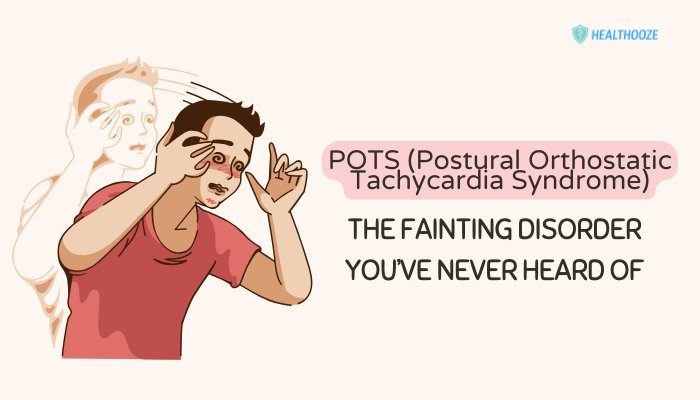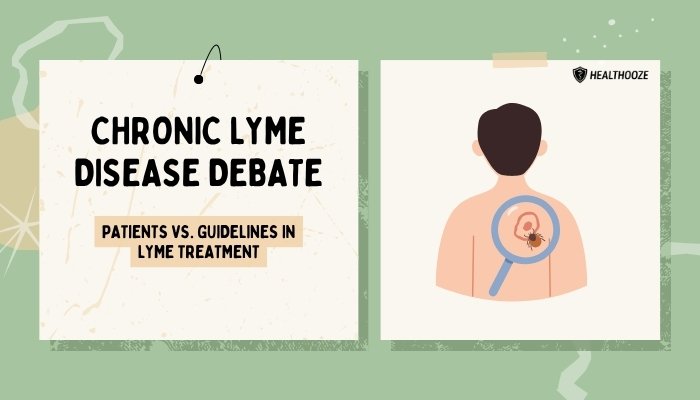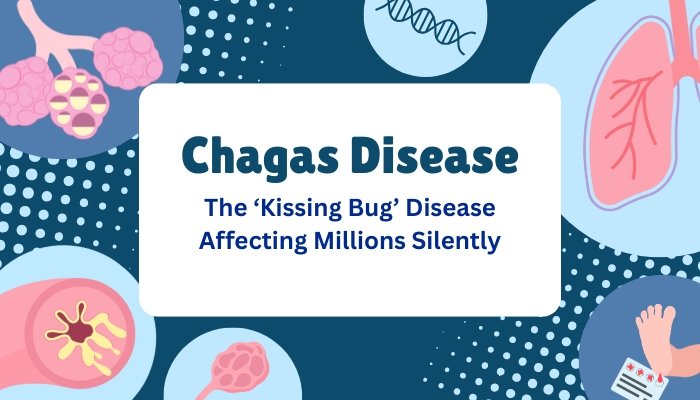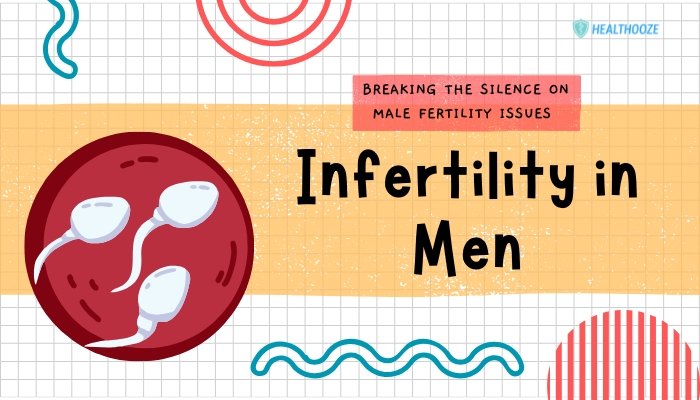Introduction
Postural Orthostatic Tachycardia Syndrome (POTS) is a disorder that affects blood circulation, resulting in a significant increase in heart rate upon standing. Although it may sound unfamiliar, it is more common than you might think. People with POTS often feel lightheaded, dizzy, or experience fainting spells (syncope), leading to daily challenges in work, school, or normal routines.
Some patients battle chronic fatigue and severe brain fog, while others must carefully plan simple activities—such as walking or grocery shopping—to avoid fainting.
Despite its potentially debilitating effects, POTS remains underrecognized. Many patients cycle through multiple specialists, trying to identify the cause of their fainting or incessant dizziness. Knowledge about POTS has grown in recent years, partly due to greater awareness of autonomic disorders, but misconceptions and undiagnosed cases persist.
Understanding POTS is essential—not just for those living with it, but also for healthcare providers, caregivers, and anyone who wants to support a friend or family member coping with unexplained fainting spells.
This article delves into the fundamentals of POTS: how it’s defined, key symptoms, possible causes, diagnosis, and the multitude of management strategies. Armed with accurate information, individuals are better able to recognize POTS early, seek effective treatment, and improve their quality of life.
Defining POTS: An Overview
Postural Orthostatic Tachycardia Syndrome is best understood in the context of the autonomic nervous system (ANS), which regulates heart rate, blood pressure, digestion, and other involuntary functions. In POTS, the ANS struggles to compensate for upright posture, causing an excessive increase in heart rate (tachycardia) upon standing. Specifically, the heart rate may rise by more than 30 beats per minute (bpm) within 10 minutes of standing—or exceed 120 bpm in total—without a significant drop in blood pressure that explains the heart rate jump.
Subtypes of POTS
- Neuropathic POTS
- Peripheral nerves controlling blood vessel constriction do not function optimally, allowing blood to pool in the lower extremities.
- This leads to insufficient blood flow to the brain, triggering a compensatory rapid heart rate to maintain circulation.
- Hyperadrenergic POTS
- Excessive sympathetic (“fight-or-flight”) activity causes surges in norepinephrine, leading to palpitations, anxiety, and high blood pressure on standing.
- Patients might also note tremors, sweating, or insomnia.
- Hypovolemic POTS
- Low blood volume exacerbates orthostatic tachycardia.
- Decreased plasma volume may result from inadequate fluid retention or other systemic factors.
These subtypes can overlap, and not all individuals fit neatly into one category. Regardless of the specific mechanism, the hallmark remains an abnormally high heart rate upon standing, coupled with symptoms that significantly impair daily functioning.
What’s the Difference Between POTS and Orthostatic Hypotension?
- Orthostatic Hypotension: Primarily involves a drop in blood pressure (>20 mmHg systolic or >10 mmHg diastolic) within minutes of standing, often resulting in dizziness or fainting. Heart rate can increase but is not the main criterion.
- POTS: Blood pressure might stay normal or even slightly elevated, but heart rate surges. The consistent finding is tachycardia, rather than a dramatic blood pressure drop.
An individual can have elements of both conditions, or experience shifts in their autonomic dysfunction over time. Recognizing these distinctions helps pinpoint POTS as opposed to other orthostatic disorders.
Hallmark Symptoms of POTS
While dizziness and fainting upon standing are among the most recognized signs, POTS encompasses a broad range of symptoms. These can vary from mild to severe, affecting numerous bodily systems.
Main Orthostatic-Related Symptoms
- Rapid Heartbeat (Palpitations)
- Noticeable pounding in the chest after standing
- Some report chest pains or a fluttering sensation
- Dizziness and Lightheadedness
- Feeling as though one might faint, especially after being upright for a few minutes
- Worsened by hot environments, dehydration, or extended standing
- Near-Fainting (Presyncope) or Fainting (Syncope)
- Some patients remain conscious but need to sit or lie down quickly
- Others fully lose consciousness, often leading to injuries from falls
Beyond Orthostatic Intolerance
- Fatigue and Weakness
- Chronic tiredness that can be overwhelming, unrelated to the amount of rest or sleep
- Difficulty in performing normal tasks, leading to reduced physical endurance
- Exercise Intolerance
- Post-exercise malaise, prolonged recovery, or excessive exhaustion after moderate physical activities
- Even walking upstairs can provoke tachycardia and breathlessness
- Brain Fog
- Trouble concentrating, forgetfulness, difficulty finding words or completing tasks
- Can be profound, affecting academic performance or job productivity
- Digestive Issues
- Nausea, bloating, abdominal pain, or bowel irregularities (e.g., constipation, diarrhea)
- Possible overlap with conditions like Irritable Bowel Syndrome (IBS)
- Temperature Sensitivity
- Sweating abnormalities (too much or too little)
- Intolerance to heat, triggering worsened dizziness or fainting
- Anxiety-Like Symptoms
- Racing heart, shortness of breath, and shaky feelings that mimic panic attacks
- However, these are physiologically driven rather than purely psychological
Symptom Fluctuations
POTS commonly presents in “good days” and “bad days.” On a bad day, simply standing to brush one’s teeth may feel monumental. Stress, hormonal shifts, infections, or dehydration can aggravate symptoms. Recognizing these trigger factors helps patients and caregivers strategize symptom management, adjusting routines or medications accordingly.
Causes and Risk Factors
No single cause explains why POTS develops, and the condition may arise from multiple overlapping factors. Researchers suspect that it involves disrupted autonomic function, partial nerve damage, or excessive catecholamine (adrenaline, norepinephrine) release. Certain predispositions and life events can increase susceptibility.
Underlying Mechanisms
- Autonomic Nervous System Malfunction
- A reduced ability for blood vessels to constrict upon standing leads to blood pooling in the legs, thereby triggering compensatory tachycardia to maintain blood flow to vital organs.
- Neural Damage or Neuropathy
- In neuropathic POTS, small fiber nerves in the lower extremities underperform, failing to tighten blood vessel walls effectively.
- Hyperadrenergic States
- Excessively high levels of norepinephrine cause an overactive sympathetic response, spiking heart rate and sometimes blood pressure.
Potential Triggers
- Viral Illness
- POTS can emerge or worsen after infections like mononucleosis, influenza, or other viral conditions.
- The immune response might injure autonomic nerves or shift autonomic regulation.
- Trauma or Surgery
- Physical injuries, accidents, or significant surgical operations occasionally precipitate POTS.
- Hormonal Changes
- Puberty, pregnancy, or postpartum shifts can coincide with the onset of POTS.
- Fluctuations in estrogen can affect vascular tone and fluid retention.
- Autoimmune Conditions
- Some patients with POTS also have autoimmune disorders like Hashimoto’s thyroiditis or celiac disease.
- Ongoing research explores whether autoantibodies disrupt autonomic receptors.
Demographic Factors
- Age: POTS commonly manifests in adolescents and young adults, though it can appear at any stage.
- Gender: Women account for a large majority of diagnosed cases—estimates range from 75% to 80% female prevalence. This may relate to hormonal influences or underdiagnosis in males.
- Genetics: Some families show a pattern of orthostatic intolerance, suggesting an inherited component, but no single gene is definitively linked to all POTS subtypes.
Understanding these associations can guide doctors to investigate POTS when treating a patient with unusual fainting or persistent tachycardia, especially if onset followed a known trigger like a viral infection or pregnancy.
Diagnosing POTS
Diagnosis is not always straightforward. Patients may first see a primary care physician or cardiologist for palpitations, dizziness, or fainting episodes. A thorough evaluation, including medical history and physical exams, helps rule out other conditions (e.g., arrhythmias, thyroid dysfunction, heart failure). If suspicion persists, specialized tests confirm the presence of POTS.
Key Diagnostic Criteria
- Orthostatic Tachycardia
- Heart rate increase of ≥30 bpm (≥40 bpm in adolescents) within 10 minutes of standing, or a total standing heart rate of >120 bpm.
- Symptoms of Orthostatic Intolerance
- Lightheadedness, presyncope, or syncope triggered by upright posture.
- Symptom Duration
- Symptoms must persist for at least 3–6 months.
- Absence of Significant Orthostatic Hypotension
- Blood pressure does not markedly drop.
- Exclusion of Other Causes
- Thyroid disorders, structural heart disease, adrenal tumors, or other forms of autonomic failure must be excluded.
Specialized Tests
- Tilt Table Test
- The patient is strapped to a motorized table that tilts them from lying down to an upright angle (~70 degrees).
- Heart rate and blood pressure are monitored; a marked heart rate jump without major blood pressure drop is indicative of POTS.
- 24-Hour Holter Monitoring
- Continuous ECG recording tracks heart rhythms over a day, identifying episodes of tachycardia or arrhythmias.
- Catecholamine Levels
- Blood draws while lying down and upright can measure norepinephrine surges, revealing hyperadrenergic POTS.
- Neurological Evaluations
- Additional autonomic reflex tests assess sweat responses, breathing patterns, or small nerve fiber function.
Overlapping Diagnoses
Patients might also exhibit features of Ehlers-Danlos Syndrome, Chronic Fatigue Syndrome (ME/CFS), or Mast Cell Activation Syndrome (MCAS). Clinicians should consider these comorbidities, particularly if there’s a history of joint hypermobility, persistent post-exertional fatigue, or allergic-type reactions. Teamwork among cardiologists, neurologists, and rheumatologists helps refine diagnoses.
Medical Management: Finding the Right Balance
No single therapy cures POTS, but various strategies can minimize symptoms and enhance day-to-day functioning. The goal is to stabilize blood volume, improve vascular tone, and mitigate tachycardia without causing adverse effects.
Medications
- Fludrocortisone
- Increases sodium and water retention, boosting blood volume.
- Can help reduce orthostatic intolerance in some patients.
- Beta-Blockers (e.g., Propranolol, Metoprolol)
- Lower heart rate and reduce palpitations.
- Must be titrated carefully; high doses risk overshooting and causing hypotension.
- Midodrine
- Constricts blood vessels, aiding orthostatic stability.
- Typically short-acting, so it’s used during daytime hours.
- Ivabradine
- Selectively lowers heart rate without affecting blood pressure as strongly as beta-blockers.
- Often well tolerated by those with high resting heart rates.
- Other Options
- Pyridostigmine to improve autonomic nerve signaling.
- SSRIs or SNRIs for certain cases with significant anxiety or neuropathic pain components.
Healthcare providers often proceed by trial and error, combining low-dose medications. Regular follow-up monitors blood pressure, heart rate, and side effects. Adjusting medication regimens over time is common.
Non-Pharmacological Interventions
- Increased Fluid and Salt Intake
- Consuming 2–3 liters of water daily supports plasma volume.
- Extra dietary sodium (e.g., 3–5 grams daily) can help maintain blood pressure upon standing.
- Compression Garments
- Waist-high compression stockings or abdominal binders minimize venous pooling in the lower body.
- May lower dizziness by improving venous return to the heart.
- Physical Countermaneuvers
- Leg crossing, buttock clenching, or tensing calf muscles while standing can reduce fainting episodes.
- Shifting weight or toe raises help keep blood circulating.
- Exercise Regimens
- Gradual, recumbent exercises (like recumbent cycling, swimming) to build cardiovascular fitness.
- Low-intensity, slow progression prevents exacerbation of symptoms.
- Sleep Hygiene
- Avoiding late caffeine, maintaining consistent bedtimes, and elevating the head of the bed slightly.
- Good sleep can reduce daytime tachycardia triggers.
Lifestyle Adjustments
- Avoiding Prolonged Standing: Quick breaks to sit or recline in jobs requiring extended upright posture.
- Stress Management: Anxiety can worsen autonomic instability, so therapies like CBT, mindfulness, or deep breathing can help.
- Temperature Moderation: Minimizing hot showers, hot tubs, or direct sun exposure, which exacerbate vasodilation.
- Frequent Small Meals: Large meals diverts blood to the digestive system, aggravating orthostatic symptoms.
Living with POTS: Real-World Considerations
Beyond medical interventions, people with POTS must navigate daily tasks differently from healthy individuals. Seemingly ordinary activities—taking a shower, waiting in line, cooking—can become draining or hazardous if presyncope hits. Over time, developing personalized coping strategies and forming supportive networks is critical.
Emotional and Social Impact
- Isolation
- Fear of fainting might deter social outings or interactions.
- Inconsistency in symptoms can frustrate friends and family.
- Misunderstandings
- Co-workers, teachers, or peers might mistake dizziness for laziness or panic attacks.
- Transparent communication about POTS fosters understanding.
- Mental Health Strains
- Chronic unpredictability can lead to anxiety or depression.
- Counseling or online support groups help patients exchange coping tips, share experiences, and reduce isolation.
Education and Work
- School Accommodations
- Students may need to take breaks, hydrate, or lie down during the day.
- Some might request extra time for tests if brain fog hinders concentration.
- Employment Adjustments
- Flexible schedules, remote work options, or frequent rest periods can sustain productivity.
- Some employees adjust job roles to reduce high physical demands or standing for extended periods.
- Disclosure and Advocacy
- Deciding whether to tell an employer or teacher about POTS is personal.
- In many cases, honest explanation yields better acceptance and accommodation.
Social and Family Dynamics
- Driving: Occasional episodes of dizziness or syncope raise concerns about operating a vehicle safely. Patients often consult with doctors or the local driving authority to evaluate risk.
- Household Tasks: Partners or family members may share or modify chores to lighten the strain on someone with POTS.
- Travel: Airline flights or long car trips can be challenging due to restricted mobility, altitude changes, or dehydration. Planning includes compression stockings, hydration, seat selection, and potential airport assistance.
Prognosis and Research Directions
POTS often fluctuates, with phases of improvement or exacerbation. Many patients experience partial symptom relief over several years, particularly if triggered by a specific life event (like pregnancy or an infection). Some young patients see significant reduction in symptoms as they transition into adulthood, though relapse or persistent mild symptoms can occur.
Natural History of POTS
- Adolescents: In many teens, orthostatic intolerance peaks around puberty and gradually lessens in early adulthood.
- Adults: Ongoing management might be necessary, but consistent therapy can reduce severe episodes.
- Comorbidities: Coexisting conditions like migraines, IBS, or autoimmune diseases can shape the overall prognosis.
Emerging Research and Potential Therapies
- Autonomic Modulation Techniques
- Noninvasive devices or implants that regulate nerve signals might provide targeted relief for advanced cases.
- Immunological Investigations
- The role of autoantibodies or immune dysregulation is an active research area, potentially guiding new treatments.
- Pharmacological Innovations
- Drugs focusing on heart rate regulation without diminishing blood pressure too drastically.
- Personalized medicine approaches (e.g., genotyping to match patients with the best medication).
- Link with Long COVID
- Many patients with “long COVID” exhibit POTS-like symptoms. Ongoing studies analyze overlapping mechanisms, offering fresh insights for both communities.
A deeper understanding of the ANS’s control over cardiovascular reflexes may uncover more effective therapies for POTS. Collaborative research bridging cardiology, neurology, immunology, and physiology expands the knowledge base, benefiting patient care.
Practical Tips for Daily Life
Building an Effective Routine
- Morning Strategy
- Gentle wake-ups, ample hydration before getting out of bed, wearing compression garments early.
- Avoid rushing to stand if feeling dizzy.
- Meal Spacing
- Try smaller, more frequent meals to prevent significant post-meal hypotension or tachycardia.
- Exercise Plan
- Start recumbent or semi-recumbent routines: swimming, using a recumbent bike, or short floor-based Pilates/yoga sequences.
- Steady, incremental progression under the guidance of a health professional.
Hydration Boosters
- Electrolyte-Rich Drinks
- Homemade solutions (water with salt and lemon) or low-sugar sports beverages can help replenish sodium and fluids.
- Check Labels
- Some “healthy” drinks may be low in sodium. Reading labels ensures adequate electrolyte content.
Self-Monitoring
- Heart Rate Trackers
- A wearable device can alert you to rising heart rate upon slight exertion, aiding early intervention.
- Symptom Diary
- Journaling dizziness, palpitations, potential triggers, or medication times clarifies patterns for fine-tuning treatment.
- Progressive Techniques
- Keep track of improvements (like a reduced resting heart rate) or stable days for motivation.
Communication and Support
- Inform Key People
- Telling roommates, classmates, or close friends about your condition helps them understand if you need quick help.
- Wear a medical alert bracelet if fainting risk is high.
- Mental Health
- Psychotherapy or support groups help cope with unpredictability.
- Engaging in hobbies or creative outlets fosters a sense of achievement beyond medical constraints.
Table: Comparing Symptoms and Key Features of POTS Subtypes
| Feature | Neuropathic POTS | Hyperadrenergic POTS | Hypovolemic POTS |
| Primary Mechanism | Partial nerve damage impairs vasoconstriction | Excessive sympathetic output, high norepinephrine | Decreased blood volume exacerbates tachycardia |
| Typical Presentation | Lower body venous pooling, cold feet/hands | Palpitations, tremors, anxiety-like symptoms | Dry mucous membranes, frequent thirst |
| Blood Pressure Response | Usually stable or slightly low | Often normal or sometimes elevated when upright | May be variable, typically low normal |
| Key Triggers | Viral infections, autoimmune link, smaller subset | Stress, hyperadrenergic states, familial components | Low fluid intake, poor sodium retention |
| Treatment Focus | Midodrine, compression, neural reconditioning | Beta-blockers, alpha agonists, stress minimization | Aggressive fluid/electrolyte supplementation |
Myths vs. Realities of POTS
- “It’s just anxiety or panic attacks.”
- Reality: Although POTS can mimic anxiety (tremors, fast heartbeat), it is primarily a physiological circulatory issue. Emotional distress may worsen symptoms but is not the root cause.
- “People with POTS faint all the time.”
- Reality: Many experience near-fainting (presyncope) more often than complete blackouts. Some never fully lose consciousness but do feel unsteady or disoriented.
- “More salt and water alone will cure POTS.”
- Reality: While vital, fluid and sodium are supportive measures, not an outright cure. Multiple interventions—exercise, medications, and lifestyle changes—usually work together.
- “It only affects young women.”
- Reality: Although predominantly seen in female teens or young adults, men and older adults can also develop POTS. Anyone with an autonomic disruption can show these signs.
- “POTS is always permanent.”
- Reality: Symptom severity can fluctuate or significantly improve. Some outgrow the condition; others manage it well with consistent strategies. A permanent or unchanging outcome is not guaranteed.
Conclusion
POTS (Postural Orthostatic Tachycardia Syndrome) is often misunderstood, yet profoundly affects those who live with it. Characterized by a rapid heart rate upon standing, POTS introduces challenges like dizziness, fainting, and near-constant fatigue. Despite appearing as an “invisible illness,” it can limit a person’s independence, disrupt educational or career aspirations, and strain emotional well-being. However, with appropriate diagnosis—including the tilt table test, thoughtful clinical evaluation, and exclusion of other conditions—patients can begin a management journey tailored to their unique needs.
Many find relief or at least improved quality of life through a combination of medications (beta-blockers, fludrocortisone, ivabradine), non-pharmacological interventions (compression stockings, dietary changes, gentle exercise), and personal strategies (avoiding triggers, planning rest, maintaining emotional support networks). Recovery or long-term stability is not always linear, but incremental victories—like walking a little farther without fainting—can be deeply empowering. Current research into the underlying mechanisms of POTS, especially in light of post-viral syndromes, promises better interventions and a deeper understanding in the future.
Ultimately, awareness is key. Healthcare professionals attuned to POTS can offer earlier diagnoses, while family, friends, employers, and schools can provide empathy, accommodations, and acceptance. Through collective knowledge and compassion, people with POTS can maintain fulfilling lives, navigating upright posture and daily activities with confidence. As more voices share experiences, the fainting disorder you’ve never heard of may finally gain the recognition it deserves.
References
- Low PA, Sandroni P, Joyner M, et al. Postural Tachycardia Syndrome (POTS). J Clin Neurol. 2009;5(4):171–180.
- Raj SR. Postural Tachycardia Syndrome (POTS). Circulation. 2013;127(23):2336–2342.
- Sheldon RS, Grubb BP, Olshansky B, et al. 2015 Heart Rhythm Society expert consensus statement on the diagnosis and treatment of postural tachycardia syndrome, inappropriate sinus tachycardia, and vasovagal syncope. Heart Rhythm. 2015;12(6):e41–e63.
- Bryarly M, Phillips LT, Fu Q, et al. Postural Orthostatic Tachycardia Syndrome: JACC Focus Seminar. J Am Coll Cardiol. 2019;73(10):1207–1228.
- Arnold AC, Ng J, Raj SR. Postural Tachycardia Syndrome – Diagnosis, Physiology, and Prognosis. Auton Neurosci. 2018;215:3–11.
- Tzipori O, Huntington E, Kavi L, et al. Hyperadrenergic vs. neuropathic POTS: a systematic review and meta-analysis. Clin Auton Res. 2021;31(3):325–334.
- Legge AD, Maxwell L, Kavi L, et al. Joint hypermobility and the postural tachycardia syndrome. J R Coll Physicians Edinb. 2022;52(2):190–195.
- Bryarly M, Phillips LT, Fu Q, et al. A review of postural orthostatic tachycardia syndrome (POTS). Clin Auton Res. 2019;29(3):141–148.
- Ross AJ, Ocon AJ, Medow MS, et al. A case-control study on the association between postural orthostatic tachycardia syndrome (POTS) and long COVID. Transl Sports Med. 2022;5(2):117–127.
- Melander O, Rundkvist LH, Andersson B. Beta-blockers in POTS: A systematic approach to dose selection and follow-up. Curr Cardiol Rep. 2021;23(7):55.
- Wong RK, Augustyn O, Yamat J, Montoya JG. Management of post-viral and chronic fatigue syndromes: bridging the gap to post-COVID-19. Infect Dis Clin North Am. 2022;36(2):357–369.
- Benarroch EE. Postural tachycardia syndrome: a heterogeneous and multifactorial disorder. Mayo Clin Proc. 2012;87(12):1214–1225






